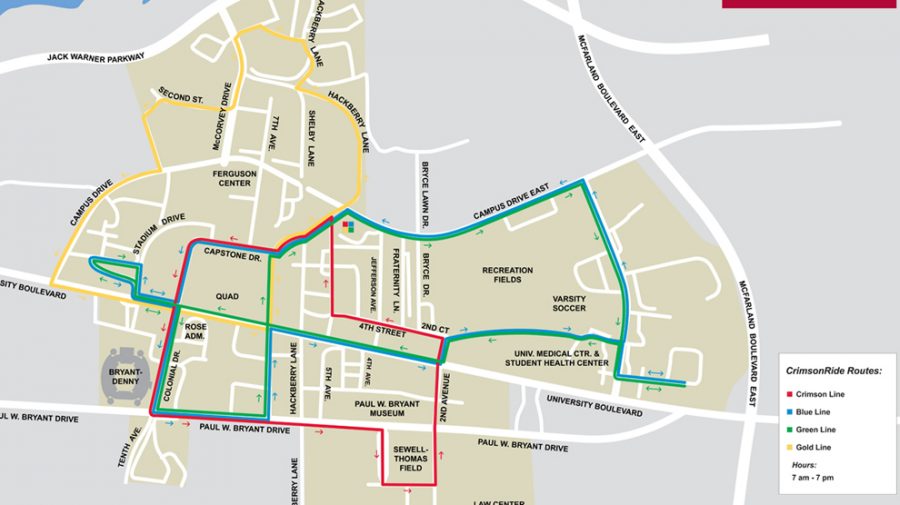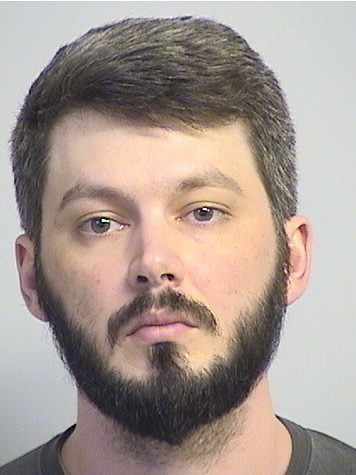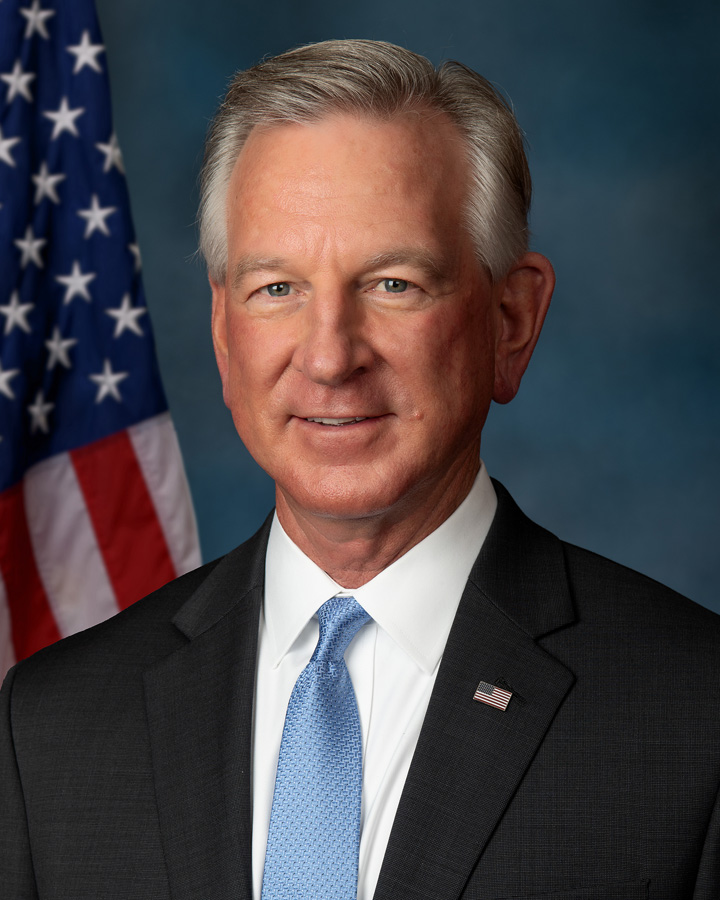The CrimsonRide will cut its routes in half from eight to four when the fall semester begins Aug. 18.
The current system consists of eight routes with 15 buses. Under the new system, 14 buses will run four routes, but no jobs will be lost, Cathy Andreen, spokeswoman for the University, said.
Decreasing the fleet size will allow the buses to have a better flexibility ratio—meaning the extra buses can be used for other University events as well as to run routes when a bus requires maintenance, said Ralph Clayton, assistant director of Transportation Services.
“We were running too close to capacity,” he said.
The University’s Transportation Services hired Solstice Transportation Services, a consulting company in Georgia, to study students’ ridership habits between February and June, Andreen said. The study analyzed what is most important to the riders on campus and identified the biggest problems with the current routes.
Based on their findings, Solstice recommended a plan that would reduce waiting times, save fuel and simplify the transit system by offering fewer routes.
“The new four-route system is expected to provide faster, more efficient and greener service,” Andreen said. “The routes should be more convenient and less confusing. More buses will be available for each route, providing faster service and shorter wait times. All routes will go into the hub, and most people are expected to have fewer bus changes as they travel across campus.”
With the buses’ current routes, waiting times are about seven and a half to 15 minutes, she said. After the new routes are implemented, waiting times should be around four and a half to 12 minutes.
“Depending on schedule and timing, it is possible to have a bus arrive at each stop approximately every six to seven minutes in opposite directions,” the Solstice study states.
Several campus organizations played a role in the study and the decision to move forward with the route changes. These groups include the SGA, the Parking and Transportation Committee, the Transportation Operations Management Team, Emergency Preparedness, Disability Services and Master Planning, as well as bus operators and a random selection of riders.
“Students complained about not knowing which route to take and which bus on the route to take,” SGA Press Secretary Katie Breaseale said. “This consolidates routes and eliminates the directional routes.”
For example, she said, Gold 1 and Gold 2 will no longer exist; rather, the route will simply be known as Gold. “Students often give feedback on ways to improve the transit system,” Breaseale said. “Those concerns often come to their SGA because they often feel that the SGA is the best way to voice their concerns and ideas to the proper channels, as we have done in the situation.”
Some of the complaints the SGA received cited overcrowding in certain areas of campus.
“The Quad was congested, according to studies and student feedback,” Breaseale said. “This system further eliminates that congestion.”
After the new routes are implemented, she said, the SGA plans to get feedback from students.
Further information will be released closer to the beginning of the fall semester, Clayton said, and all of the changes are preliminary and subject to change.
The new routes include: • Green route, which goes north-south through most of the campus’ residential areas, which will complete a 2.5-mile loop in about 18 minutes. The study says the average wait time at a bus stop is 4.5 minutes for this north-south route. • Crimson-Quad route, which is a combination of the current Crimson and Coleman-Quad routes. It will complete a 2.8-mile loop in about 20 minutes. The study says the average wait time is 5 minutes for this north-south route. • Blue route, which was designed to touch new areas of growth around the University, including the new nursing school. It will complete a 4.5-mile route in about 34 minutes. The average wait time is 11.3 minutes for this east-west route. • Turquoise route, which runs in the opposite direction of the blue route. The average wait time is 12 minutes.
Hannah Mask contributed to this report.










